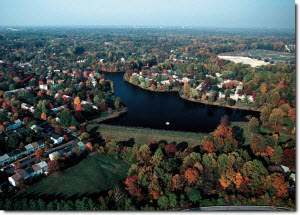Where Nutrient Pollution Occurs

Nutrient pollution affects air and water around the country. The impacts of excess nutrients are found in all types of water bodies. Pollutants often enter upstream waters like creeks and streams and then flow into larger water bodies like lakes, rivers and bays. Excess nitrogen and phosphorus can also travel thousands of miles to coastal areas where the effects of the pollution are felt in the form of massive dead zones, such as those in the Gulf of Mexico and Chesapeake Bay. More than 100,000 miles of rivers and streams, close to 2.5 million acres of lakes, reservoirs and ponds, and more than 800 square miles of bays and estuaries in the United States have poor water quality because of nitrogen and phosphorus pollution.
Additionally, nutrients can soak into ground water, which provides drinking water to millions of Americans, and urban areas across the country have hazy skies and air quality problems related to airborne nitrogen pollution.
